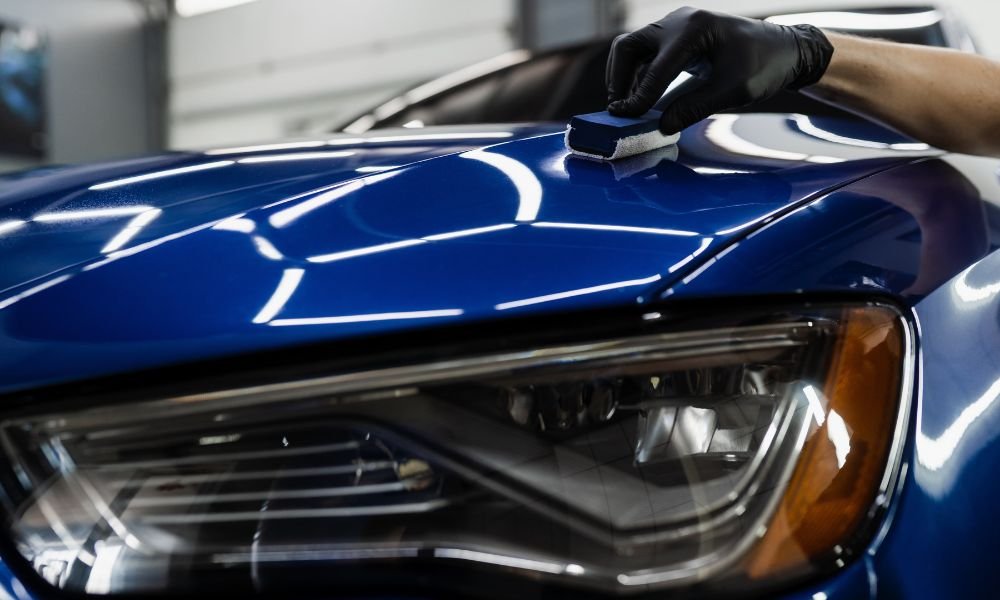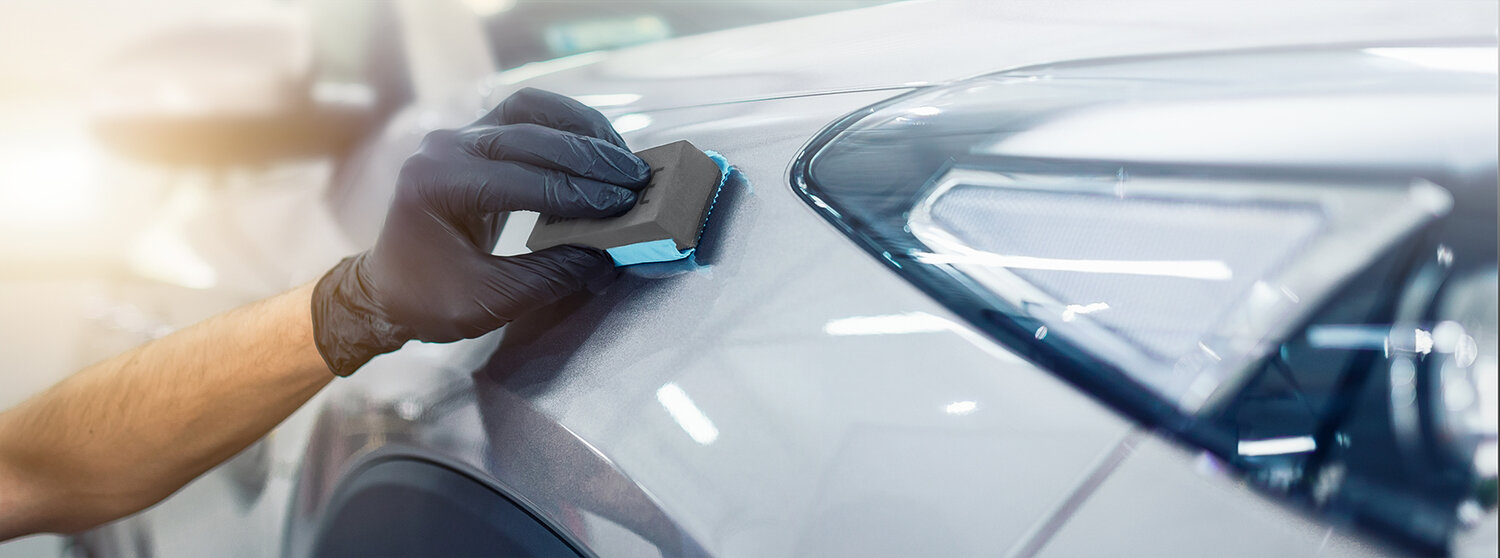Ceramic Coating vs. Sealants: Recognizing the Distinctions for Your Car
Ceramic Coating vs. Sealants: Recognizing the Distinctions for Your Car
Blog Article
The Importance of Ceramic Coating: Protecting Your Automobile's Outside With Accuracy
In a period where maintaining the visual and useful integrity of your car is vital, ceramic covering becomes a critical remedy. This protective layer not just defend against ecological adversities but also elevates the aesthetic allure of your automobile. With its special bonding properties, ceramic finish supplies a level of security that far goes beyond traditional waxing techniques. Exactly how exactly does it achieve such remarkable outcomes? As we explore the nuances of its application and contrast it to other choices, one can not ask yourself yet aid regarding the specifics that make this modern technology essential for contemporary auto care.
Advantages of Ceramic Coating
When it comes to preserving an automobile's visual allure, ceramic covering supplies considerable benefits. By forming a semi-permanent bond with the vehicle's paint, ceramic coverings successfully avoid oxidation and fading, guaranteeing that the auto maintains a shiny, showroom-like coating for a prolonged period.
Along with its protective high qualities, ceramic finishing offers impressive hydrophobic properties, creating water and various other fluids to bead off effortlessly. This function streamlines the cleaning process, as dirt and particles are much less most likely to stick to the surface, lowering the regularity and initiative needed for upkeep. Furthermore, the finishing's resistance to chemical stains from acidic contaminants like bird droppings and tree sap is one more noteworthy advantage, lessening prospective paint damages.
Ceramic coatings also enhance scrape resistance, giving a layer that can absorb small abrasions and swirl marks. This feature is especially advantageous in preserving an excellent surface, minimizing the chance of visible flaws and preserving the integrity of the car's paintwork over time.

Just How Ceramic Coating Functions
Understanding the technicians behind ceramic layer reveals its effectiveness as a safety remedy for automobiles. Ceramic finishes are basically liquid polymer applications that chemically bond with a cars and truck's manufacturing facility paint, developing a safety layer. This layer functions as a barrier against ecological impurities such as gunk, ultraviolet, and dust rays, which can deteriorate an automobile's outside gradually. The essential part in ceramic finishing is silicon dioxide (SiO2), which stems from quartz crystals and is understood for its outstanding hardness and sturdiness.
Application of ceramic covering includes a careful process. The car's surface need to be extensively cleaned up and decontaminated to make certain ideal attachment. Once used, the fluid polymer creates a semi-permanent bond with the paint, setting into a transparent, sturdy shield. This shield improves the automobile's gloss and hydrophobic homes, promoting easier cleansing by triggering water and contaminants to bead and slide off effortlessly.
Moreover, the finish's molecular structure gives resistance to small scratches and chemical stains. Unlike waxes or sealers that rest on top of the paint, ceramic finishings incorporate with the surface area, providing resilient protection. This combination is essential to its efficiency, making sure the automobile's finish continues to be excellent for several years.
Comparing Ceramic Coating to Alternatives
In the world of automobile protection, ceramic finishing stands as an awesome alternative when compared to conventional options such as sealants and waxes. While waxes provide a momentary glossy surface, usually lasting just a few weeks to months, ceramic finishes supply a longer-lasting solution, commonly sustaining for many years. This resilience is credited to the chemical bonding that occurs when ceramic layers are applied, forming a solid layer that is resistant to environmental hazards.
Contrastingly, sealants, although more resistant than waxes, still drop brief of the robust protection provided by ceramic coverings. Sealants can usually last for up to a year, supplying a synthetic guard against certain aspects. They do not have the premium hydrophobic buildings and UV security that ceramic layers deliver.
Moreover, ceramic layers provide boosted scrape resistance, which neither waxes neither sealants can successfully match (ceramic coating). This is particularly advantageous in maintaining a car's excellent appearance. Additionally, ceramic finishes streamline upkeep efforts by decreasing the adherence of dirt and gunk, therefore promoting easier cleansing. In summary, while conventional waxes and sealers provide standard security, ceramic coatings provide a detailed, lasting option that considerably preserves the lorry and improves's exterior finish.
Application Refine Clarified
Applying ceramic coating to an automobile requires a careful procedure to make sure optimal outcomes and toughness. When cleansed, the car is dried out and brightened to remove any blemishes, as any existing swirls or scratches can end up being extra noticable after the layer is used.
Following surface prep work, the application of the ceramic finish starts. The finish is typically used in a climate-controlled setting to stop dirt fragments from settling on the freshly cleaned surface. Making use of an applicator pad, the ceramic layer is applied in tiny areas to make certain even insurance coverage. It is vital to comply with the manufacturer's standards Clicking Here concerning the suitable healing time and application thickness.
After application, the coating needs a certain healing period, throughout which the vehicle needs to be go to the website safeguarded from water and contaminants. This healing process can vary depending on the item yet generally varies from 24 to 48 hours. Inevitably, this thorough procedure is critical in attaining a resilient and glossy finish.
Maintenance Tips for Longevity
To keep the long life of a ceramic finish, adherence to a regimented maintenance regimen is vital. Regular washing is critical; make use of a pH-neutral vehicle hair shampoo and soft microfiber mitts to prevent abrasions. Stay clear of automated vehicle washes, as their severe brushes can jeopardize the finishing's integrity. Rather, decide for a hand wash to ensure extensive yet gentle cleaning.
Post-wash, drying the vehicle with a tidy microfiber towel protects against water spots that might deteriorate the coating with time. Additionally, apply a ceramic layer booster every couple of months. These boosters reinforce the hydrophobic residential properties and improve the covering's safety abilities, ensuring it continues to be reliable against impurities.
Remember that parking places play a vital function in upkeep. ceramic coating. Whenever possible, park in shaded areas to lessen UV direct exposure, which can Full Report slowly damage the coating. For lasting storage, take into consideration using a cars and truck cover for included defense versus environmental components
Final Thought
In final thought, ceramic finish serves as a crucial protective layer for lorry outsides, using long-lasting protection against ecological elements such as dust, uv, and grime rays. Understanding the application process and sticking to maintenance suggestions are crucial for maximizing the longevity and efficiency of ceramic finishing.
When it comes to preserving a car's aesthetic allure, ceramic finishing offers significant benefits. By creating a semi-permanent bond with the vehicle's paint, ceramic coatings efficiently protect against oxidation and fading, guaranteeing that the cars and truck keeps a shiny, showroom-like coating for a prolonged duration. Ceramic finishes are basically fluid polymer applications that chemically bond with an automobile's manufacturing facility paint, developing a safety layer. In summary, while typical waxes and sealants provide standard security, ceramic layers offer an extensive, long-term service that dramatically preserves the vehicle and enhances's exterior surface.

Report this page